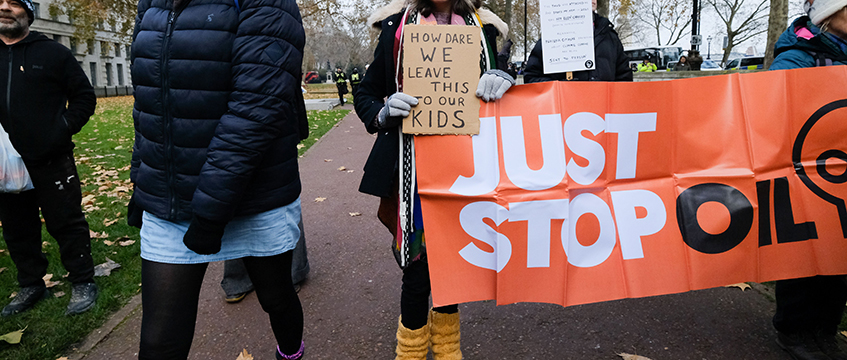In Valero Energy Ltd and others v Persons Unknown [2024] EWHC 134 (KB); [2024] PLSCS 22, the first decision since the Supreme Court’s judgment in Wolverhampton City Council and others v London Gypsies and Travellers and others [2023] UKSC 47; [2023] PLSCS 197, the High Court has set out practical guidelines for determining whether summary judgment and a final protester injunction should be awarded.
Protests
The claimants were three companies in a large petrochemical group – the Valero Group – which owned or had a right to possession of eight oil refinery and oil terminal sites in England and Wales. The sites were targeted by four organisations – Just Stop Oil, Extinction Rebellion, Insulate Britain and Youth Climate Swarm.
Following public threats and protests, and in fear of tortious trespass and nuisance by persons unknown connected with these organisations, the claimant sought an interim injunction prohibiting such behaviour, which was granted ex parte on 21 March 2022. Despite this, protests took place at the Kingsbury site between 1 and 15 April 2022. This led to 86 protesters being arrested.
The term of the injunction was extended on 20 September 2022, with named defendants added to the proceedings. It was replaced by similar orders on 20 January and 28 July 2023.
In December 2023, the claimants sought summary judgment and a final quia timet – or anticipatory – injunction for five years with annual reviews.
A letter to the government from Just Oil in February 2022 threatened action unless various demands were met and police intelligence briefings supported the risk of trespass and nuisance. The court was satisfied that there had been valid service of the application, evidence and notice of hearing, but the defendants did not enter an appearance or defence, with 43 named defendants providing undertakings to the claimants’ solicitors, and 17 that had refused to do so.
The law
CPR 24 requires the court to determine whether the defendants have a realistic – as opposed to fanciful – prospect of defending the claim. While the court must analyse the evidence put before it, including the defences which persons unknown might run, it is not required to effect a mini trial (ED & F Man Liquid Products v Patel [2003] EWCA Civ 472).
An injunction is a discretionary remedy. The claimants needed to prove that there was a real and imminent risk of the defendants causing the torts feared, not that they had already been committed (National Highways Ltd v Persons Unknown and others [2023] EWCA Civ 182). Guidance as to the substantive and procedural requirements for an injunction against persons unknown was given by the Court of Appeal in Canada Goose UK Retail Ltd v Persons Unknown and another [2020] EWCA Civ 303; [2020] 1 WLR 2802; [2020] PLSCS 37 and approved by the Supreme Court in Wolverhampton.
Wolverhampton established there is no obstacle to the grant of a final injunction against unknown newcomers in appropriate cases where there is a compelling need which cannot be met by other measures and there is procedural protection for the affected newcomers.
Guidelines
Having considered both Canada Goose and Wolverhampton, the court set out the following substantive and procedural guidelines and was satisfied the claimant had established a right to a quasi-final injunction on the terms sought:
1. There must be a civil cause of action (fear of trespass, crime and public and private nuisance pleaded).
2. There must be full and frank disclosure by the claimant.
3. There must be sufficient and detailed evidence to justify the court finding that the immediate fear is proven on the balance of probabilities and no trial is required (evidence showed fully justified fears and actions only restrained by the interim injunctions).
4. There must be no realistic defence (no defence filed; claimants addressed potential human rights defences which were bound to fail).
5. There must be compelling justification – a higher threshold than the balance of convenience – for an injunction against persons unknown and named defendants whose human rights must be considered (protection of claimants’ sites and nearby public).
6. The injunction must be necessary and proportionate to the need to protect the claimant’s right (that the sites were part of the national infrastructure, the dangers in shutting down/restarting any refinery site and threats of continued action all justified the injunction).
7. The claimant must show that damages would not be an adequate remedy (disruption of supply and refining works would incur substantial sums; no offer to pay costs or damages by named defendants and recovery from persons unknown impossible).
8. The persons unknown must be clearly and plainly identified by reference to the tortious conduct to be prohibited and defined geographical boundaries.
9. The prohibitions must be set out in clear words, not framed in technical terms.
10. The prohibitions must mirror the torts claimed or feared.
11. The prohibitions must be defined by clear geographic boundaries if possible.
12. The duration of the final injunction should be only such as reasonably necessary to protect the claimant’s legal rights (five years reasonable in light of threats made).
13. The proceedings, evidence, application and draft order must be served by alternative means sanctioned by the court.
14. The persons unknown must be given the right to apply to set aside or vary the injunction.
15. Provision must be made for reviewing a final injunction in the future (satisfied here by annual reviews).
Key points
- The court sets out practical guidelines for grant of protester/traveller injunctions
- Quia timet injunction requires proof of risk of action, not action itself
Louise Clark is a property law consultant and mediator







